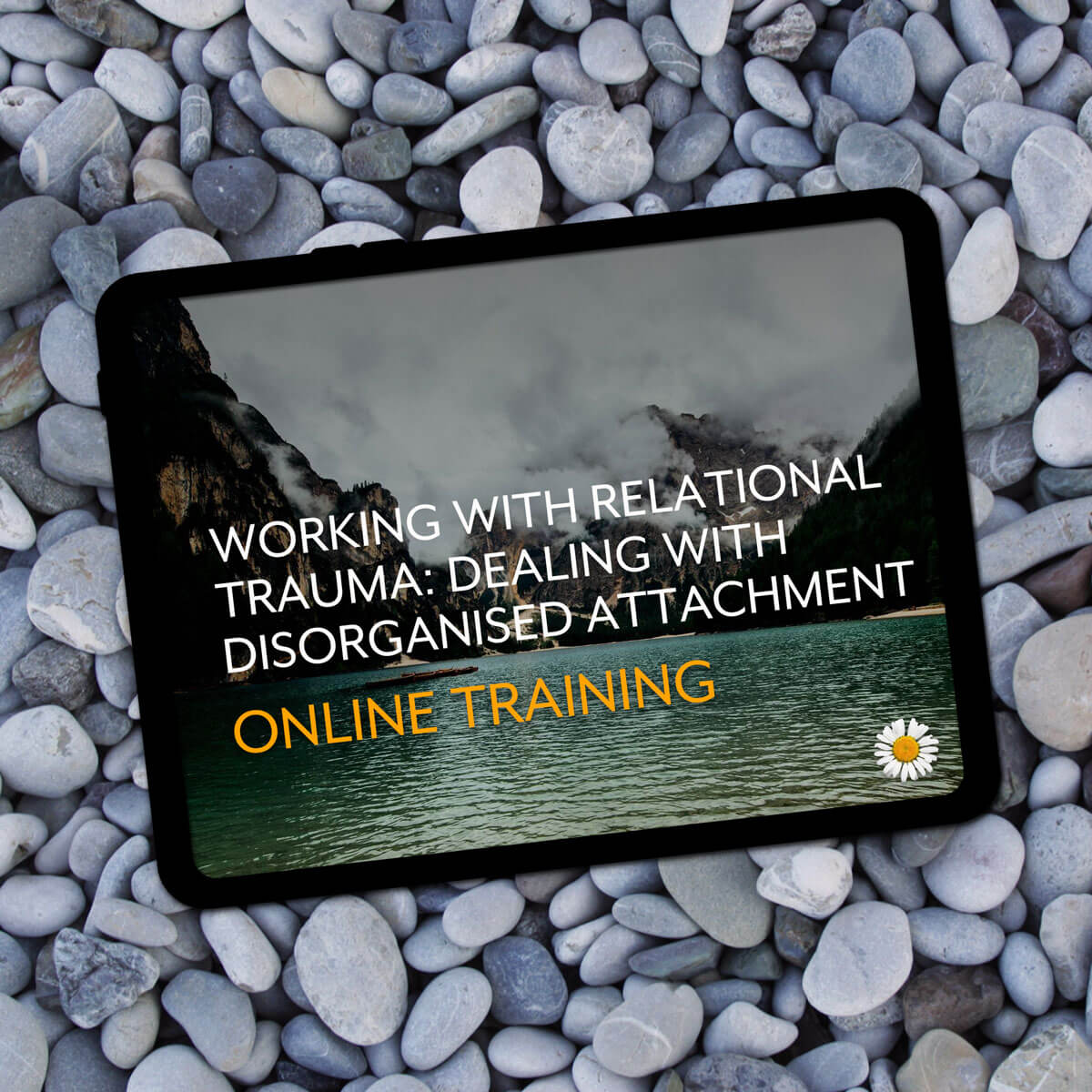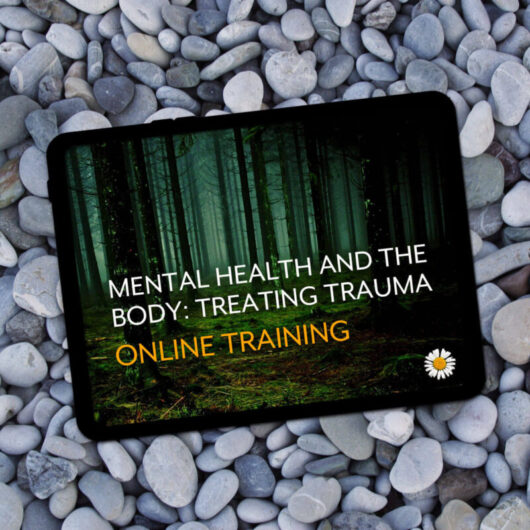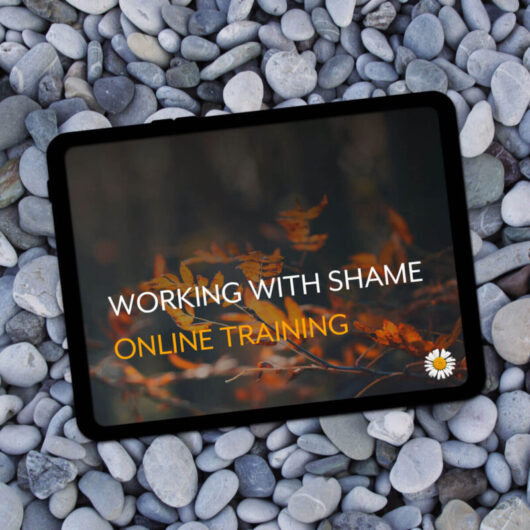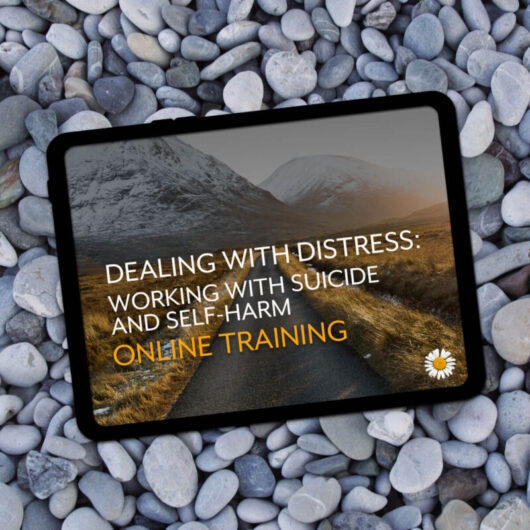Working with Relational Trauma: Dealing with Disorganised Attachment Online Training
In this course I look at the evolution of attachment theory and what this means for working therapeutically with people who have experienced relational trauma, and how its impacts can be reversed through the development of a secure base and ‘earned secure attachment’ through psychotherapy. Aimed principally at professionals, this course is in fact relevant to anyone who has been a child, a parent, or indeed a human being … because attachment theory, quite simply, is relevant to everybody.
“Mind-blowing, amazing training, practice-changing even! This will help me as a therapist and will also help so many clients. Thank you.”
“This has been incredibly useful training as I embark on counselling post-qualification. The fact that Carolyn can speak from experience and in a jargon-free way, brings extra depth to the learning. It’s left me with much to think about and reflect on, plus some wonderful resources to refer to and use with clients. Thank you also for the much-needed encouragement in the last lesson! Highly recommended.”
“Such an insightful course and coupled with Carolyn Spring’s personal experiences it made it even more beneficial.”
“I have learnt so much and can understand present (and hopefully future) clients so much more clearly with this insightful course. Delivered clearly with a range of additional resources to complement the spoken presentation.”
“I found this training completely engaging. It was so easy to understand and relatable and told by Carolyn with such heartfelt sincerity. I have understood so much more about attachment from this course than any book or CPD I have previously read and undertaken. Thank you so much for doing this course and for helping me as a therapist do the best job I can.”
“I found this training very helpful because of the combination of theoretical and practical clinical aspects. The difficulties and challenges of relational interactions with clients with different attachment adaptions, styles and trauma histories were very well conveyed. I think it was about the right length and usefully challenging me as a therapist in questioning my own attachment style. The course was easy to use, being split into fairly short videos. Exceptional value as it has aspects of attending a workshop rather than just a seminar or talk. Potentially transformative to my practice (and I don’t say that lightly).”
“I have always found attachment theory jarring despite having many lectures/training on it. This course explained it so clearly and enabled me to connect with it in a way I haven’t felt before. I really liked how much it went into the impact of attachment styles during adulthood and how this may be shown in the therapy room. I think what helped me to connect with it was hearing it from Carolyn’s perspective of experiencing DID – it really brought it to life and I could clearly see how and why attachment styles are formed, but also to hear the hope that it can be changed confirmed my beliefs and gave me a sense of pride in the work I do as a counsellor.”
“As a trainee counsellor who’s still working through my own difficult childhood, I found this mind-blowing. So much of my ‘stuff’ now makes sense and I know I’ll be returning to my notes as I continue to move forward THANK YOU!”
- Available instantly upon purchase
- No set schedule – work at your own pace
- 6 hours of CPD with certificate upon completion
- Downloadable resources and additional reading for a comprehensive learning experience including:
- Course Notebook (with space for notes, reflection questions, session summaries, references and links)
- PowerPoint handouts (two versions, one with space for notes, one for easy printing)
- MP3 audio files
- Videos available to stream or also downloadable for offline viewing
- Lifetime access
- Start/stop and return as often as you like
- Easy to use: only needs a web browser and PDF reader
- Individual licence only: for multiple users and information about discounts for organisations, please click here.
Childhood trauma such as sexual abuse, neglect and physical violence inevitably represents a violation of boundaries. It constitutes a profound disregard for our wishes and feelings, as well as an invasion of our privacy and bodies. Rather than growing up with a secure attachment where our personal, physical and psychological boundaries are respected, as trauma survivors we have often grown up in harmful or neglectful relationships. As a result, we may struggle to maintain our own boundaries as well as to respect other people’s. This can manifest in ‘enmeshed’ relationships where we are over-involved in others’ lives, or ‘distant’ ones where we find it hard to draw close to people, especially in intimate settings. In the worst case scenario, in what is called ‘disorganised attachment’, we may develop a dissociative disorder as the outworking of the inability to stay safe in close connection with meaningful others.
This course will look in-depth at attachment theory and how the brain develops based on the thousands of tiny interactions between a baby and its primary caregiver. As a result of these interactions, attachment ‘styles’ develop which continue to play out throughout life and in all of our adult relationships. These attachment ‘styles’ – including ‘disorganised’, which is highly correlated to both dissociative disorders and so-called borderline personality disorder – revolve around the expression or suppression of emotion in order to maintain connection and seek safety in relationships. This training will look at how this develops, and the role that psychotherapy can play in developing ‘earned’ secure attachment through affect regulation and mentalising.
I’ll look at questions such as:
- If therapy is all about the relationship, then what do you do when the client is really difficult to relate to – too much, too little, too close, too rejecting, too changeable, too untrusting, too controlling, too scared? Can you understand their behaviours as being logical in the light of their previous experiences? Can you show them the dignity and respect they need (and deserve)?
- What do you do when the client ‘attaches’ too quickly or too intensely? Or seemingly fails to form an attachment at all?
- Ever been stalked by a client one moment and dropped by them the next? Ever found yourself needing to be their solution, or feeling deskilled and incompetent? Or, in other words, ever been tripped up by disorganised attachment?
- How is ‘attachment’ the nuts and bolts, here-and-now, make-it-or-break-it stuff of the therapy relationship? How are mirroring and empathy transformative? What is attunement?
- How do your own attachment experiences affect the way you handle (or avoid) conflict, establish and maintain boundaries (or fail to) and work collaboratively (or coercively) with the too-much or the too-little client?
- How can attachment theory inform your work with clients with even the most controversial of labels like borderline personality disorder or dissociative identity disorder? Should you steer clear or will your own attachment security provide the secure base for them to explore their past, present and future?
Although aimed primarily at counsellors and psychotherapists, the course is relevant to everyone, because we all have emotions, we all have relationships, and we have all been shaped by our early life experiences.
Course Content Summary
Session 1
- Exploring via personal narrative the impact of relational trauma and in particular disorganised attachment.
- Exploring the limitations of the medical model of mental illness as a framework for emotional distress.
- Introducing the importance of relational models of psychotherapy for healing relational wounds.
- Exploring the phenomenological experience of relational difficulties resulting from attachment trauma.
Session 2
- Introducing the development of attachment theory by John Bowlby, Mary Ainsworth and Mary Main.
- Understanding attachment in the context of safety and threat and its connection therefore to trauma.
- Exploring the three subsets of early life attachment behaviour identified by Bowlby and how these correlate to later adult behaviours.
Session 3
- Exploring the development of attachment theory from literal proximity to perceived attunement via internal working models.
- Exploring the impact of mismatches between dyadic attachment styles.
- Understanding the development of attachment styles as evidenced by Mary Ainsworth’s ‘Strange Situation’ and the resulting core beliefs and presentations which develop from these.
Session 4
- Exploring the aetiology of disorganised attachment as a relationship-specific phenomenon.
- Exploring Liotti’s theory that disorganised attachment, trauma and dissociation are intertwined.
- Exploring disorganised attachment as ‘fear without solution’.
- Exploring how attachment styles result in specific strategic approaches to relationships.
- Introducing the concept of the therapist as a trigger of disorganised attachment behaviours and the clinical impact of this.
Session 5
- Exploring the clinical implications of boundaries via narrative and metaphor.
Session 6
- Exploring the role and presentation of conflict in relational trauma.
- Exploring the link between secure attachment and positive conflict resolution, and the presentation of conflict within insecure and disorganised attachment styles.
- Exploring the difference between anger and rage from an attachment perspective.
- Exploring via personal case study the challenges of conflict and boundary-enforcing in clinical session.
- Exploring the research on the role of self-disclosure and conflict management in complaints against therapists.
Session 7
- Exploring the neurobiological development of affect regulation from infancy onwards and the role of experience in the acquisition of self-regulatory neural networks.
- Exploring the concept that attachment styles are not value-based but survival-driven.
- Exploring how attachment drives differing perceptions of the task/relationship balance and the potential for conflict in therapist/client dyads.
- Exploring hemispheric differences in the brains of people with different attachment styles and the implications of this for developing secure attachment.
Session 8
- Exploring the persistence of attachment style across the lifespan via Mary Main’s ‘Adult Attachment Interview’ and the implications of this for developing ‘earned secure attachment’.
- Exploring the phenomenological presentation of adult attachment styles.
- Exploring the predictive power of early life attachment styles on future generations.
- Exploring the role of the ‘stance of the self towards experience’ in rewiring attachment styles.
- Introducing a simple matrix delineating attachment-related self/other concepts.
Session 9
- Exploring the role of affect regulation and mentalising in building earned secure attachment, and the outworking of this in clinical practice.
- Exploring clinical goal setting, the role of traumatic transferences, and boundary infractions.
- Exploring the inefficacy of reassurance as therapeutic technique in rewiring attachment patterning.
- Exploring the relative merits and risks of strong/soft boundaries in clients with different attachment presentations.
- Exploring the presentation of ‘controlling-caregiving’ and ‘controlling-coercive’ behaviours in clients with disorganised attachment.
Session 10
- Exploring how to replicate the dynamics of secure attachment through ‘marked and contingent’ mirroring.
- Exploring how attachment styles influence ‘markedness’ and ‘contingency’ in non-verbal mirroring.
Session 11
- Exploring skills for affect regulation in an attachment-sensitive way (thinking versus feeling and bi-hemispheric).
- Exploring Fonagy’s concept of ‘psychic equivalence’ and the relevance of this for insecure-ambivalent clients.
- Exploring how to promote mentalising in place of reassurance-seeking for insecure-ambivalent clients.
- Exploring how to encourage interactive re-regulation with insecure-avoidant clients.
- Exploring a model of articulating affect based on sensations, thoughts and impulses.
- Exploring the use of physical proximity to escalate or de-escalate attachment bids for connection.
- Exploring how to adjust language to encourage emotional expression from insecure-avoidant clients.
- Exploring the presentation of conflicted approach/avoid in disorganised attachment.
- Exploring how to work compassionately but non-collusively with highly triggered dissociative clients.
Session 12
- Exploring the phenomenological experience in disorganised attachment of a caregiver who is ‘frightened and frightening’.
- Exploring the representation of disorganised attachment as multiple models of self/other.
- Exploring the opportunities and limits of ‘model-disconfirming behaviour’.
Session 13
- Exploring the phenomenological experience of aloneness and loneliness in clients with relational trauma and how to work sensitively with this.



